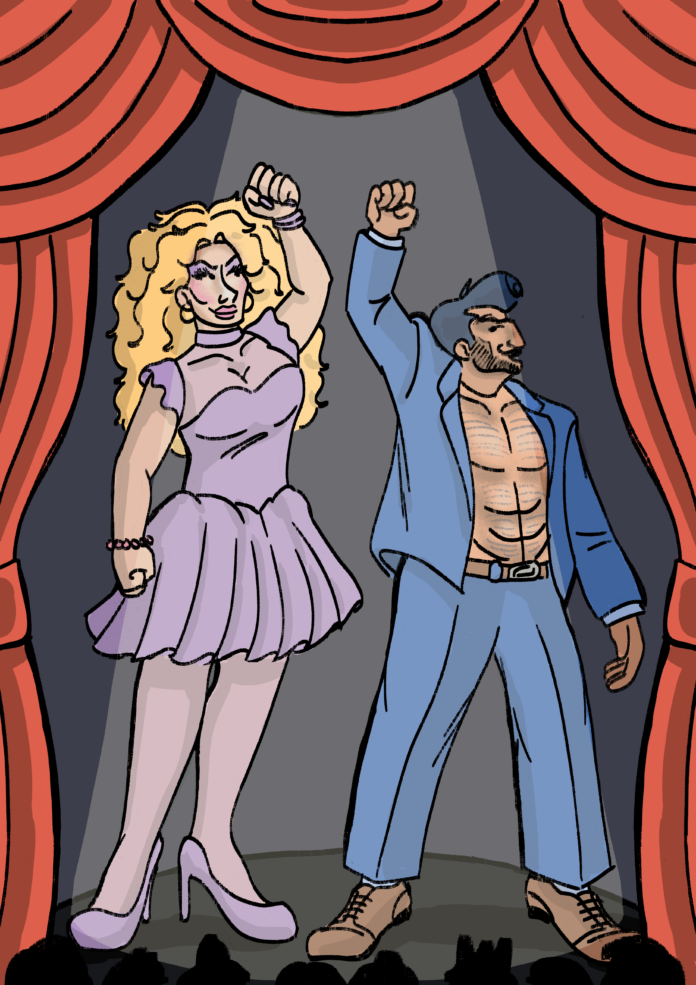Exploring drag’s history of resistance and how it inspires us right now
By TARA ROMERO— tcrome@ucdavis.edu
Drag is so much more than the new season of RuPaul’s Drag Race (however, Onya Nerve, a writer for The California Aggie is rooting for you).
Drag is queer expression. Drag is gender. Drag is racial identity. Drag is art. Drag is loud, and drag refuses to be silenced.
On Feb. 7, Sasha Velour, an esteemed gender-fluid drag queen, came to our very own campus to give a lecture on their new book, “The Big Reveal: An Illustrated Manifesto of Drag,” blessing us with a Lypsinka-esque performance. In Velour’s lecture, they broke down the history of drag and why it’s relevant today.
What stood out to me most from Velour’s excellent critical analysis of drag ended up being the free forum portion of the evening, in which members of the UC Davis community were able to share their feelings. In response to Donald Trump’s presidency and our country’s shift to conservative legislature and enactments, UC Davis students and the Davis LGBTQIA+ community are feeling anxious and unsure about our country’s future and our own safety.
Since returning to office, Trump has enacted overreaching executive orders to discriminate against transgender people across America. On his first day in office, he enacted an order that makes the United States only “recognize two sexes, male and female. These sexes are not changeable and are grounded in fundamental and incontrovertible reality.” In enacting this entirely socially established binary, Trump essentially discredits transgender, intersex, non-binary and gender-fluid identities.
From an executive order on Jan. 28, the United States will no longer “fund, sponsor, promote, assist, or support” any person’s gender-affirming medical care if they are under 19. Hospitals across the country have already begun to halt gender-affirming care for transgender children, according to an article from the American Civil Liberties Union (ACLU).
It’s no surprise that our community is feeling anxious and unsure when our government is so openly discriminating against our bodies and our identities.
The Trump administration wants us to be scared and hide ourselves. It wants children to live in bodies that don’t feel like their own. It wants us to not live as ourselves and instead wants us to assimilate to an imaginary standard of what our gender “should be.”
Drag is the antithesis of what the conservatives want queer and trans people to be. Drag expresses queerness and gender in abundance. Drag artists live their identities to the fullest extent, and their performances serve as inspiration within their communities.
The history of drag is rich and complex, existing across many cultures. Author Simon Doonan explained how drag dates back to classic Greek and Roman theater. Drag has also notably made its mark on the English Shakespearean stages, Japanese Kabuki theater and Chinese Peking opera — all before the 19th century.
In the U.S., the art of drag has always been an act of resistance. Throughout the 19th and 20th centuries, police raided gay and lesbian bars to crack down on “sexual indecency.” The first person to call themselves a “queen of drag” was William Dorsey Swann, a formerly enslaved Black person who held private drag events with other Black drag artists and was arrested in 1888 during a “drag raid.” After decades of police raids, Black and Latina trans women and drag artists, like Marsha P. Johnson, Sylvia Rivera, Stormé DeLarverie and Miss Major Griffin-Gracy, led the Stonewall Uprising in 1969 — a historic symbol of queer resistance.
During the acquired immunodeficiency syndrome (AIDS) epidemic in the 1980s, drag queens would organize fundraisers and educate the community on AIDS. Black drag queens, like Bob the Drag Queen and Jo Mama, were vocal and involved in the Black Lives Matter protests in 2020. Right now, in Sacramento, a local group of drag artists is holding Drag Benefits for Gaza.
Alongside the U.S. government’s long history of policing queer people and the bodies and forms of expression of Black, Indigenous and people of color (BIPOC), there has always been a long history of drag artists’ resistance to go with it.
For every member of the Davis community who is feeling anxious and unsure right now — do not hide yourself. Do not let your voice be silenced. Express yourself how you want to express yourself. Protest for your rights and your community’s rights. And, remember: You’ve always got a drag queen in your corner.
Written by: Tara Romero— tcrome@ucdavis.edu
Disclaimer: The views and opinions expressed by individual columnists belong to the columnists alone and do not necessarily indicate the views and opinions held by The California Aggie.





